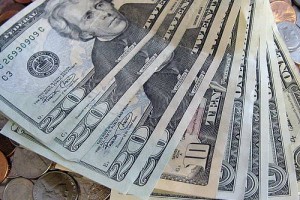I stumbled across this article yesterday:
“The cost of John Grisham’s “Ford County,” officially released Tuesday, moved up and down like stock market shares as rivals Amazon.com and Walmart.com extended, then rescinded, their high discounts for top-selling pre-orders. Early in the day, Amazon was selling Grisham’s book of short stories for $9, the same price it had offered for “Ford County” before publication and a sign that Amazon was ready to continue the cost competition beyond the release date. Walmart.com was selling “Ford County” for $12 early Tuesday, then cut the price to the pre-order discount of $8.98.”
But cheap books are a good thing, right?
Wrong, and here’s why.
BYE BYE INDIES:
This type of price fixing devastates independent booksellers, who can’t possibly compete with those discounts. Already under pressure from the big box stores, this trend of offering the most popular releases at huge discounts almost guarantees their demise. I spoke with one independent bookseller the other day who confessed that for some books, she sends her staff to Costco or Wal-mart, because the discount there is far greater than what they receive from their regular distributors. Wal-mart and Amazon are slowly but surely tightening their grip around the throats of the indies with this practice. Although there will always be some consumers who are willing to spend a bit more to support their local bookstore, in a tight economy, it’s unrealistic to expect people to spend two or three times as much for the same product they can order from the comfort of their home.
Right now, the publishing industry has quite literally put all their eggs in one proverbial basket. Fewer than fifty authors are currently propping the industry up. Their books already receive the lion’s share of the marketing budget, and now those books are being offered at previously unheard of discounts. So a typical consumer wanders into a bookstore. What’s the likelihood that they’ll purchase a hardcover by an author they’ve never heard of, when the latest James Patterson opus at the front of the store is selling for half the price? The top of the pyramid will continue to shrink, as the publishers place all their bets on a few proven writers. The likelihood of breaking out, or building an audience, in the face of that is daunting to say the least.
In addition to that, here’s another excerpt from the article, “Authors, publishers and rival booksellers worry that cutting the price so low will harm competition and force down the cost of books overall, leading to a reduction in author advances.” Advances have already shrunk by up to a third this year for many authors. While the writers who are considered “bankable” will still receive six and seven figure advances, most authors will end up working for less than minimum wage. Which means that fewer people will be able to afford pursuing a publishing career, shrinking the talent pool even further.
I’ll confess to not knowing exactly how much it costs to produce a hardcover once editing, marketing, typesetting, printing, and distribution costs are factored into the equation. However, now that Amazon, Walmart, and Target are conditioning consumers to expect lower prices, the margins for publishers will shrink. They simply won’t be able to afford to publish as many books each year. Titles that might be viewed as riskier will be avoided entirely. So there will be fewer options out there for readers. Grisham himself acknowledged as much in a recent interview with Matt Lauer, in which he criticized predatory pricing and said it was going to make it much more difficult for aspiring writers to be published, and for publishers and booksellers to survive.

